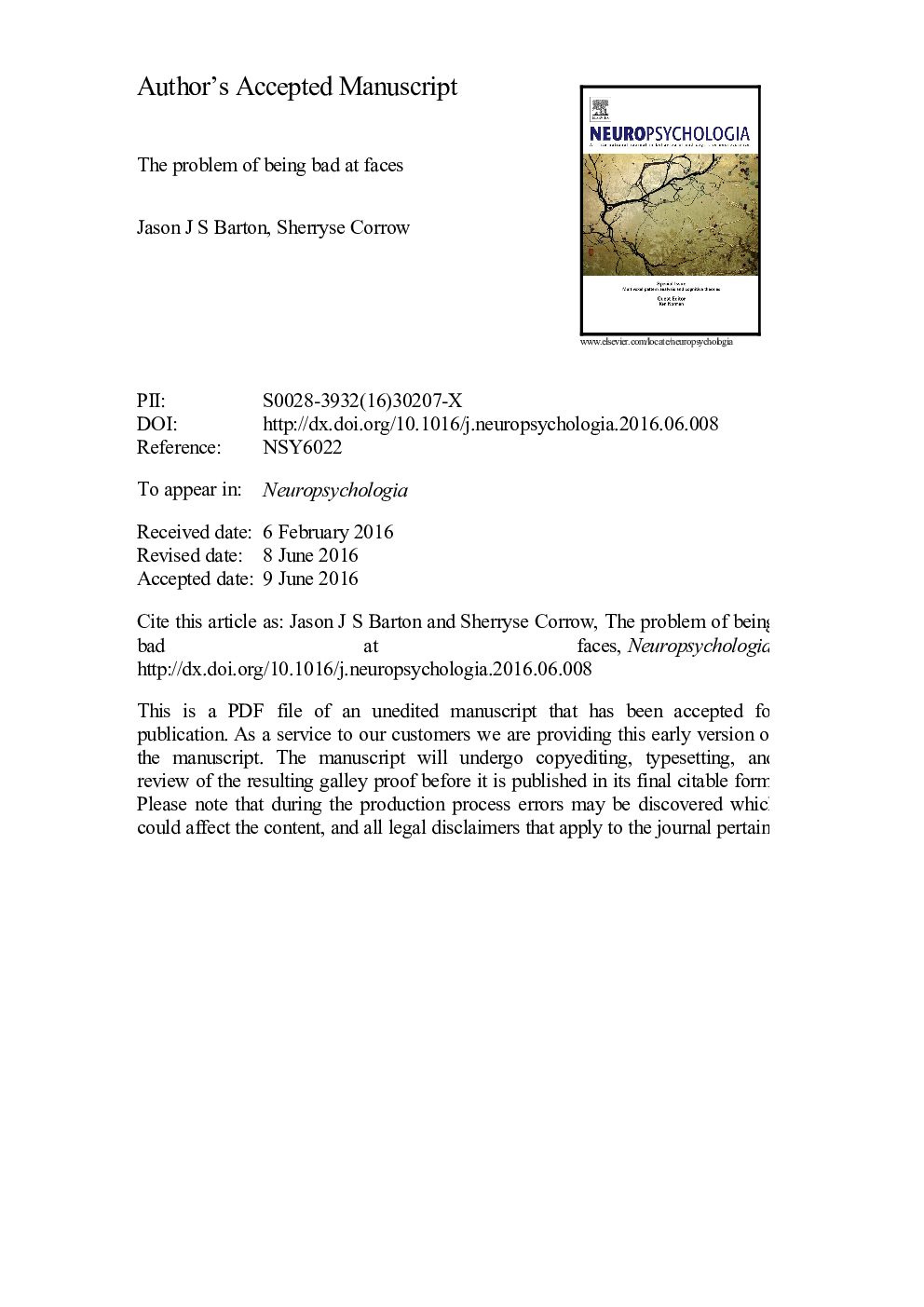| Article ID | Journal | Published Year | Pages | File Type |
|---|---|---|---|---|
| 7318565 | Neuropsychologia | 2016 | 23 Pages |
Abstract
Developmental prosopagnosia has received increased attention in recent years, but as yet has no confirmed genetic or structural markers. It is not certain whether this condition reflects simply the low-end of the spectrum of normal face recognition, an 'under-development', or a pathologic failure to develop such mechanisms, a 'mal-development'. This difference in views creates challenges for the diagnosis of developmental prosopagnosia by behavioural criteria alone, which also vary substantially between studies, with secondary effects on issues such as determining its prevalence. After review of the literature and the problems inherent to diagnoses based solely on behavioural data, we propose as a starting discussion point a set of two primary and four secondary criteria for the diagnosis of developmental prosopagnosia.
Related Topics
Life Sciences
Neuroscience
Behavioral Neuroscience
Authors
Jason J.S. Barton, Sherryse L. Corrow,
